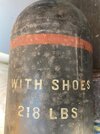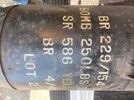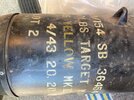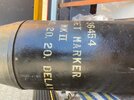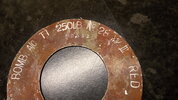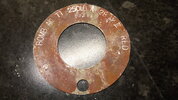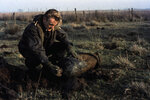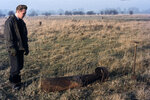BR 229/154 SB 36454
BR is ROF Bridgend, no idea as to the rest of the line
250 LBS TARGET MARKER
This is the nominal weight (see more below) although called a Target Marker they were subsequently known as Target Indicators (T.I.s)
SR 586 YELLOW Mk II
SR 586 a pyrotechnic composition "Superintendent Research" No 586 - Magnessium powder, Lithographic varnish and Sodium Nitrate. Yellow the colour of the candle.
BR 4/43 20,20,20 DELAY
BR is ROF Bridgend. April 1943 filling date. This is a very early example. The first operational use of T.I.s was 16th June 1943 against Berlin. There were at least 30 different variations of fillings for the T.I.s. Some held 60 candles and from the 20,20,20 one presumes this was one of them. Whereas most candles ignited on being ejected from the carrier, giving a cascade effect, there were also "Delay" candles. The Delay candles would ignite several minutes after ejection. It might be that this example had 40 standard and 20 delay candles.
LOT 2
Second Lot.
WITH SHOES 218 LBS
No idea as to "With Shoes" However, although described as a 250lb bomb, the book weight is 220lbs, so this must be a slightly underweight bomb and whatever "Shoes" are, they contribute to the overall weight.
Latter bombs were to be marked with "Serial Number of Bomb" three times, equally spaced around the nose. This was not a serial number in the conventional sense but more of a method of filling so that one could tell what it was loaded with.
TimG

